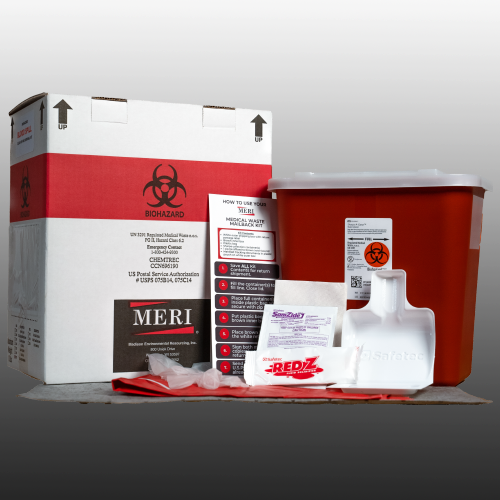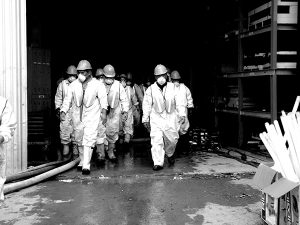Specific ATP Testing for Effective Cleanliness and Hygiene Tracking
Specific ATP Testing for Effective Cleanliness and Hygiene Tracking
Blog Article
Expert Biohazard Cleansing and Decontamination for Blood, Bodily Fluids, and Hazardous Products
The possible health dangers connected with exposure to biohazards emphasize the critical demand for thorough handling and comprehensive clean-up. As we browse the elaborate landscape of biohazard cleaning, comprehending the nuances of laws, compliance, and the specialized equipment at play comes to be crucial in guaranteeing a extensive and secure decontamination process.
Health Dangers of Biohazard Direct Exposure
Direct exposure to biohazards poses substantial health dangers that can result in extreme effects for neighborhoods and individuals alike. Biohazards include a large range of organic substances, consisting of blood, physical liquids, mold and mildew, microorganisms, infections, and various other possibly transmittable materials. When people enter into contact with these biohazards, whether with crashes, incorrect handling, or ecological exposure, they deal with the risk of having severe health problems or conditions.
Among the main health and wellness dangers connected with biohazard exposure is the transmission of transmittable conditions. Bloodborne microorganisms such as HIV, liver disease B and C, and various microorganisms can be present in biohazardous materials, positioning a direct hazard to human health. Breathing in airborne biohazards like mold spores or coming into contact with infected surface areas can additionally result in breathing issues, allergies, and various other damaging wellness effects.
Additionally, biohazard exposure can have long-term health and wellness effects, with some illness materializing years after the first call (Blood Cleanup). Therefore, it is crucial to focus on appropriate biohazard cleaning and decontamination to reduce these health and wellness threats and ensure the safety and security of neighborhoods and individuals

Specialized Educating for Biohazard Cleaning
When it comes to dealing with biohazard cleaning efficiently and securely, specialized training plays a basic function in making certain correct purification treatments are followed. Biohazard clean-up calls for certain expertise and skills to successfully mitigate risks connected with bloodborne microorganisms, bodily fluids, and unsafe materials. Specialists trained in biohazard cleanup undertake rigorous direction on exactly how to securely handle, remove, and take care of biohazardous products to prevent contamination and direct exposure.
Specialized training for biohazard cleanup covers a variety of crucial subjects, consisting of proper personal protective equipment (PPE) usage, bloodborne virus understanding, decontamination methods, and contaminated materials disposal protocols. People learnt biohazard cleaning are outfitted with the essential know-how to analyze contamination degrees, identify prospective dangers, and carry out appropriate cleaning procedures in compliance with regulatory criteria.
Continual training and education are critical in the area of biohazard clean-up to stay upgraded on the most recent purification innovations, safety methods, and laws. By investing in specialized training, biohazard clean-up professionals can effectively reply to emergency cleaning circumstances and guard both public wellness and the setting.
Significance of Correct Purification Methods
Utilizing proper purification techniques is vital in biohazard cleaning to successfully remove unsafe materials and decrease health risks. Reliable purification not only makes sure the removal of visible traces of blood, physical fluids, and various other biohazards but also targets undetectable pathogens that might pose serious wellness hazards otherwise effectively eliminated. By complying with strict decontamination methods, educated professionals can significantly lower the threat of direct exposure to dangerous microorganisms, infections, and microorganisms that can bring about infections or illness.
Proper decontamination strategies entail the usage of specific devices and anti-bacterials that are especially made to neutralize biohazards properly. Complete cleansing and disinfection of polluted areas are essential to avoid the spread of virus and guarantee a secure setting for passengers. Furthermore, the right disposal of biohazardous waste adhering to decontamination procedures is crucial in protecting against contamination see of various other surface areas or individuals.

Equipment and Tools for Safe Cleaning
When dealing with blood, physical liquids, or harmful materials, biohazard cleaning professionals rely on specialized equipment to reduce direct exposure risks and extensively sanitize the affected area. In addition, biohazard cleaning kits having disinfectants, absorptive materials, and biohazard bags are utilized to securely get rid of and consist of of contaminated things.
Advanced cleansing tools like hospital-grade anti-bacterials, HEPA-filtered vacuums, and fogging equipments are employed to sterilize surface areas and get rid of biohazards efficiently. Specialized tools such as sharps containers and biohazard waste disposal bins are made use of to safely take care of sharp items and biohazardous waste materials. By utilizing the ideal tools and tools, biohazard cleansing experts can ensure an extensive cleaning procedure that focuses on safety and minimizes wellness threats for both employees and owners of the afflicted room.
Laws and Conformity in Biohazard Cleaning
Appropriate adherence to laws and conformity requirements is paramount in biohazard cleansing to ensure the safety and security of both personnel and the setting. Federal government firms such as OSHA (Occupational Security and Wellness Management) and the EPA (Environmental Security Company) have actually established details guidelines for biohazard cleanup treatments to reduce health and wellness risks and environmental contamination. These laws cover a series of facets including the handling, transport, and disposal of biohazardous products, as well as the essential training and safety equipment needed for personnel associated with the clean-up procedure.
Biohazard cleaning companies have to stay current with these guidelines to assure that their procedures fulfill the needed safety criteria. Failure to adhere to these guidelines can result in serious repercussions, consisting of fines, legal activity, and threatening the health and wellness of people and the setting. By adhering to stringent laws and compliance measures, biohazard cleansing business can effectively minimize risks and make sure a detailed and secure cleanup procedure for all parties included.
Verdict
In conclusion, biohazard cleaning and purification require specialized training, correct techniques, and adherence to regulations. Exposure to blood, bodily liquids, and unsafe products positions significant wellness threats, making it essential to use the best tools and devices for secure cleanup. By adhering to stringent procedures and standards, experts can successfully reduce the threats related to biohazard exposure and make sure the security of both themselves and others.
As we navigate the complex landscape of biohazard clean-up, recognizing the subtleties of guidelines, compliance, and the specialized tools at play becomes this critical in guaranteeing a secure and This Site extensive purification procedure. (Blood Cleanup)
When it comes to handling biohazard cleaning efficiently and securely, specialized training plays a basic function in ensuring correct purification treatments are adhered to.Using correct purification strategies is vital in biohazard cleaning to effectively decrease and get rid of dangerous products wellness risks. Additionally, biohazard cleansing sets consisting of anti-bacterials, absorbent materials, and biohazard bags are used to securely get rid of and include of infected things.
Government agencies such as OSHA (Occupational Safety And Security and Health And Wellness Management) and the EPA (Environmental Security Company) have developed details guidelines for biohazard clean-up treatments to lessen wellness risks and environmental contamination.
Report this page